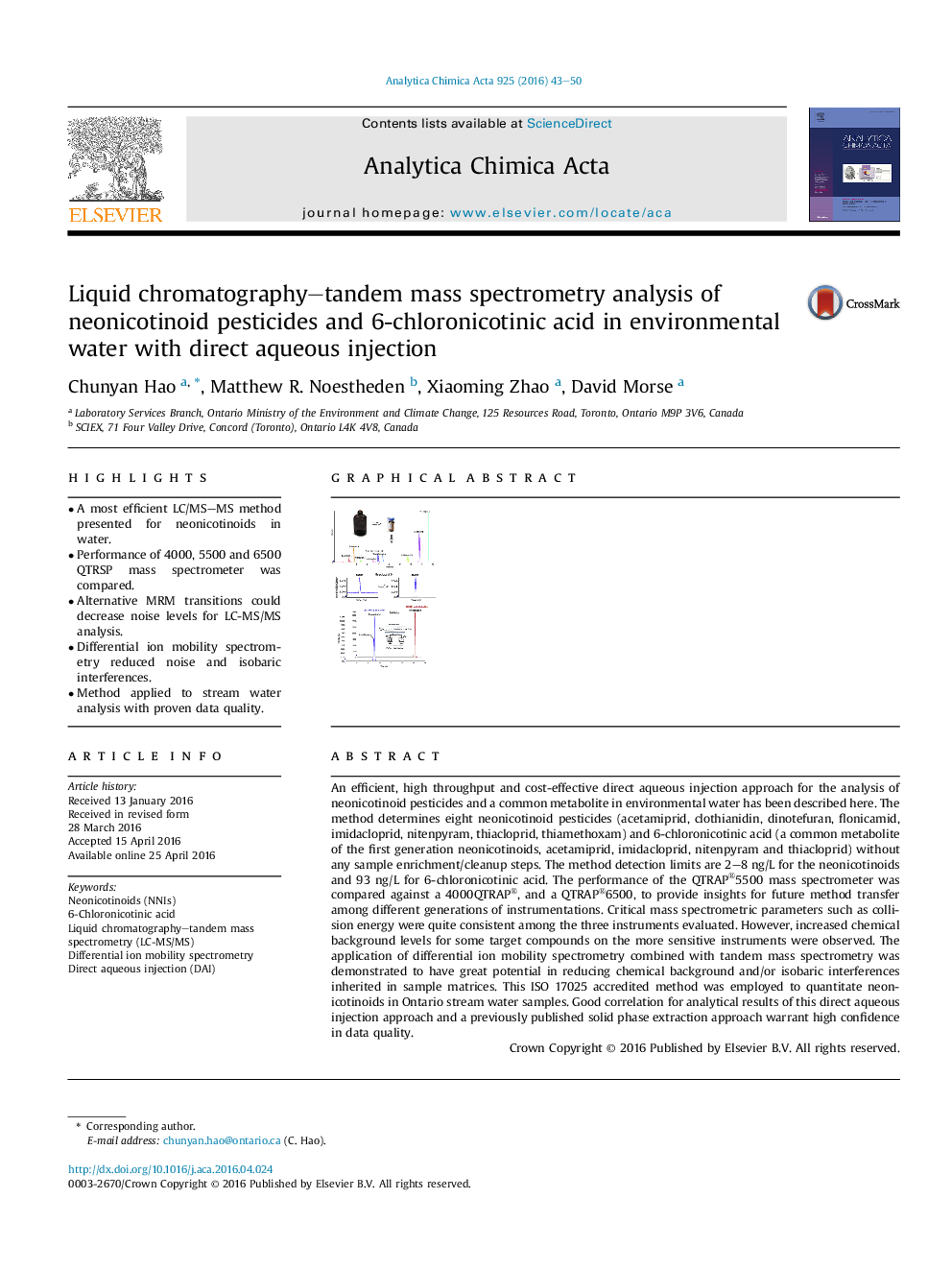| Article ID | Journal | Published Year | Pages | File Type |
|---|---|---|---|---|
| 1162770 | Analytica Chimica Acta | 2016 | 8 Pages |
•A most efficient LC/MS–MS method presented for neonicotinoids in water.•Performance of 4000, 5500 and 6500 QTRSP mass spectrometer was compared.•Alternative MRM transitions could decrease noise levels for LC-MS/MS analysis.•Differential ion mobility spectrometry reduced noise and isobaric interferences.•Method applied to stream water analysis with proven data quality.
An efficient, high throughput and cost-effective direct aqueous injection approach for the analysis of neonicotinoid pesticides and a common metabolite in environmental water has been described here. The method determines eight neonicotinoid pesticides (acetamiprid, clothianidin, dinotefuran, flonicamid, imidacloprid, nitenpyram, thiacloprid, thiamethoxam) and 6-chloronicotinic acid (a common metabolite of the first generation neonicotinoids, acetamiprid, imidacloprid, nitenpyram and thiacloprid) without any sample enrichment/cleanup steps. The method detection limits are 2–8 ng/L for the neonicotinoids and 93 ng/L for 6-chloronicotinic acid. The performance of the QTRAP®5500 mass spectrometer was compared against a 4000QTRAP®, and a QTRAP®6500, to provide insights for future method transfer among different generations of instrumentations. Critical mass spectrometric parameters such as collision energy were quite consistent among the three instruments evaluated. However, increased chemical background levels for some target compounds on the more sensitive instruments were observed. The application of differential ion mobility spectrometry combined with tandem mass spectrometry was demonstrated to have great potential in reducing chemical background and/or isobaric interferences inherited in sample matrices. This ISO 17025 accredited method was employed to quantitate neonicotinoids in Ontario stream water samples. Good correlation for analytical results of this direct aqueous injection approach and a previously published solid phase extraction approach warrant high confidence in data quality.
Graphical abstractFigure optionsDownload full-size imageDownload as PowerPoint slide
